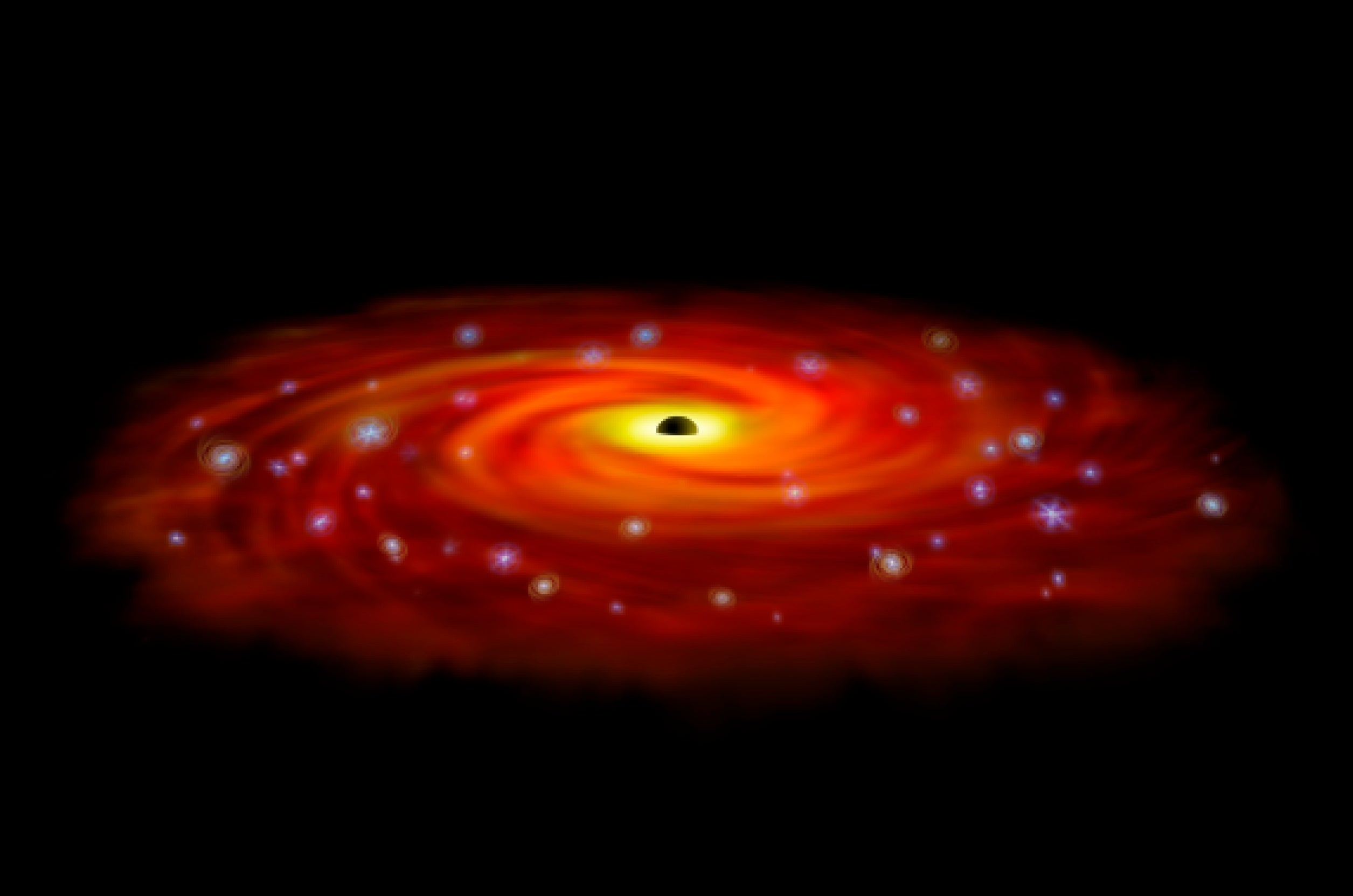Gas cloud 'stretched like spaghetti' by supermassive black hole
Through studying the cloud's death throes, scientists hope to learn more about the supermassive black hole at the centre of the Milky Way

Your support helps us to tell the story
From reproductive rights to climate change to Big Tech, The Independent is on the ground when the story is developing. Whether it's investigating the financials of Elon Musk's pro-Trump PAC or producing our latest documentary, 'The A Word', which shines a light on the American women fighting for reproductive rights, we know how important it is to parse out the facts from the messaging.
At such a critical moment in US history, we need reporters on the ground. Your donation allows us to keep sending journalists to speak to both sides of the story.
The Independent is trusted by Americans across the entire political spectrum. And unlike many other quality news outlets, we choose not to lock Americans out of our reporting and analysis with paywalls. We believe quality journalism should be available to everyone, paid for by those who can afford it.
Your support makes all the difference.Scientist have observed a giant gas cloud in its death throes, being ‘stretched like spaghetti’ as it is sucked into the supermassive black hole at the centre of our galaxy.
The cloud, known as G2, is three times larger than Pluto’s orbit but has a mass only three times that of Earth. It’s been the subject of close observations ever since it was first spotted heading towards the galactic centre in 2011.
Through studying its destruction scientist hope to learn more about supermassive black holes – the galactic objects that are thought to form the centre of all galaxies, including our own.
"The gas at the head of the cloud is now stretched over more than 160 billion kilometres around the closest point of the orbit to the black hole,” explains Stefan Gillessen, who led the observing team and works from the Max Planck Institute for Extraterrestrial Physics in Germany.
“And the closest approach is only a bit more than 25 billion kilometres from the black hole itself — barely escaping falling right in.”
"The most exciting thing we now see in the new observations is the head of the cloud coming back towards us at more than 10 million km/h along the orbit - about 1% of the speed of light,” added Reinhard Genzel.
The supermassive black hole is formally known as Sagittarius A* (although this is the designation for the radio source that is thought to be the black hole) and is thought to have a mass four million times that of the Sun.
The existence of Sagittarius A* was first hypothesised in 1971, with the case for its existence strengthened by the X-rays emitted as it sucked in stars, gas and other matter. Recent studies have calculated that Sagittarius A* is also rotating at a rate close to the speed of light – approximately 1.08bn kph.
As to the origins of the gas cloud G2, scientists are unsure, though the manner in which it is being torn apart is revealing:
“Like an unfortunate astronaut in a science fiction film, we see that the cloud is now being stretched so much that it resembles spaghetti,” says Gillessen. “This means that it probably doesn’t have a star in it. At the moment we think that the gas probably came from the stars we see orbiting the black hole."
The climax of G2’s death spiral will be closely observed by Gillessen’s team, who hope that results will reveal more about the effects of super-strong gravity as well as the nature of Sagittarius A*.
Join our commenting forum
Join thought-provoking conversations, follow other Independent readers and see their replies
Comments